Our late summer sale is now finished. Thanks for your patronage, and we hope to see you next year.
Welcome to our late summer native plant sale. Check out the plants below and think about what you’d like in your garden. Then visit our shop and place your order. Simple!
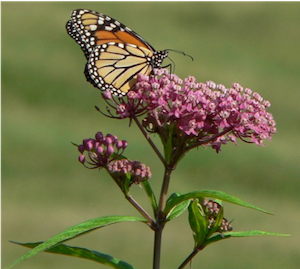
Create a wildlife oasis in your yard! The Wild Ones Keweenaw chapter is holding its first sale of the summer to help you bring a little more life to your yard. We are offering a selection of native plants to get you started gardening for butterflies, birds, and pollinators.
Love native plants? Want to take advantage of pre-sales and pay half price?
Join the Wild Ones Keweenaw chapter! Sign up here!
How our sales work
Our plant sales are online. Here’s what to do:
- Browse our plant selection below. You can link to detailed plant information sheets for each offering.
- Go to our Shop and pick out your plants.
- Check out. You may use PayPal or “pay on delivery.”
- If you have trouble checking out, email your order to [email protected].
- Pick up your order, bringing cash or a check if you have not paid with PayPal. You will receive an email reminding you when and where.
- If you are unable to pick up your order at the scheduled time, email [email protected] to make arrangements.
WHEN AND WHERE TO PICK UP YOUR PLANTS
10 a.m.-noon, Saturday, September 10, 2022
1–3 p.m., Sunday, September 11, 2022
1284 Hickory Lane, Houghton
Questions? Email [email protected]

Blue Vervain Verbena hastata
Bumblebees are important pollinators of Blue Vervain; it’s always a pleasure to see the bees’ big, fuzzy bodies clinging to the delicate purple flowers. The plant readily self-seeds and prefers the wetter conditions of marshes, ditches, wet shores and stream banks—but in the Keweenaw it will do fine in just about any sunny garden.
Also known as Blue Verbena, it’s an excellent native landscaping substitute for invasive purple loosestrife and purple foxglove. Deer avoid it; rabbits have been known to nibble on young foliage. The seeds are a staple for small mammals and birds.
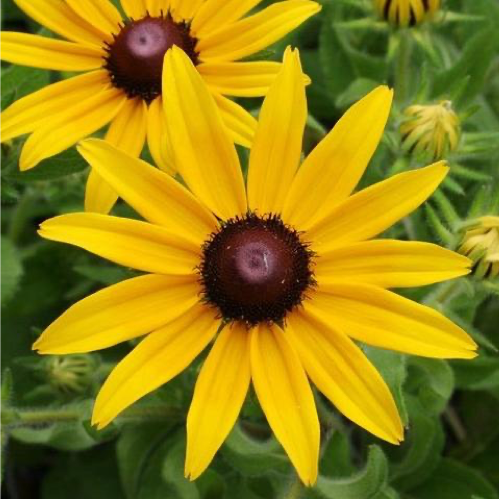
Black-eyed Susan Rudbeckia hirta
OUT OF STOCK
This beloved roadside wildflower tolerates nearly all sunny conditions. A biennial or short-lived perennial, it will return year after year if the seeds land in their happy place.
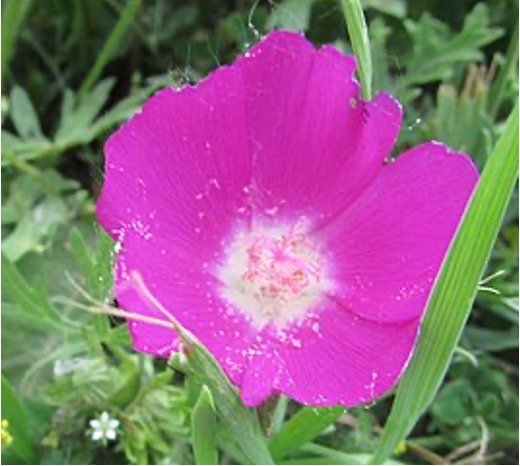
Bush’s Poppy Mallow Callirhoe bushii
OUT OF STOCK
Rare in the wild, this lovely plant with tulip-like blooms is found in the central Midwest. It’s taproot helps it survive dry conditions and even drought. Visiting pollinators include bees and hummingbirds.
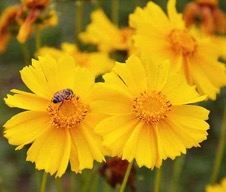
Lance-leaf coreopsis Coreopsis lanceolata
OUT OF STOCK
Lance-leaf coreopsis is the hands-down workhorse of the summer garden, throwing an exuberant display of flowers when it seems like every other plant has thrown in the towel. Dead-head to keep the show going on, and on, and on. As you would expect, lance-leaf coreopsis is not fussy. It just likes lots of sun and not too much water.
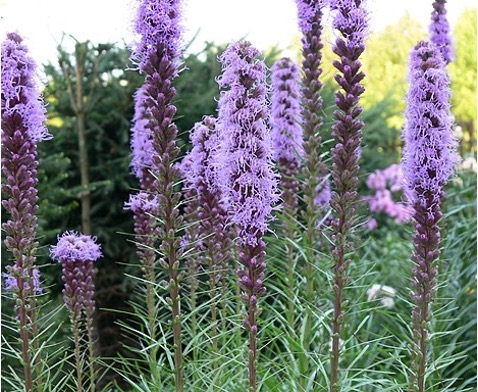
Dense Blazing Star
Liatris spicata
OUT OF STOCK
This gorgeous midsummer bloomer deserves a place in most any garden, so long as it’s not too dry; it might appreciate a drink during those occasional midsummer droughts. Consider pairing with another showstopper, purple coneflower. Very similar in appearance to prairie blazing star, Liatris spicata has even more flowers per head with smooth-pressed floral bracts, while the floral bracts of L. pycnostachya are clearly curved outward, or recurved.
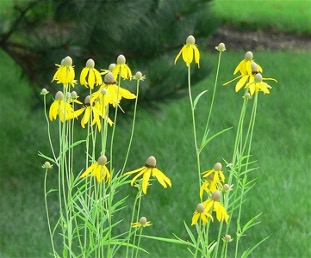
Gray-headed Coneflower Ratibida pinnata
Found in the wild along woodland edges, it adapts readily to the garden, where you can appreciate its shuttlecock flowers up close. Fair warning: those long, graceful stems do tend to flop, so consider the back of the border or tucking them amidst sturdier customers like purple coneflower.
Gray-headed coneflower is drought-tolerant, always a plus with our unpredictable summers, and deer resistant.
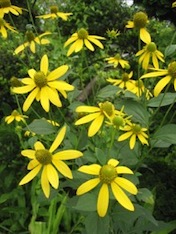
Green-headed Coneflower
Rudbeckia laciniata
Found in damp, partly shady places in the wild, this eye-catching plant does fine in full sun with some moisture. The flowers, which look like shuttlecocks, float on the end of long, graceful stems. FYI, green-headed coneflower, aka golden glow, aka cutleaf coneflower, can grow to statuesque heights. It’s great for the back of the border or filling in a big spot with very little effort. It may droop in hot sun; don’t worry. It will pop right back up overnight.
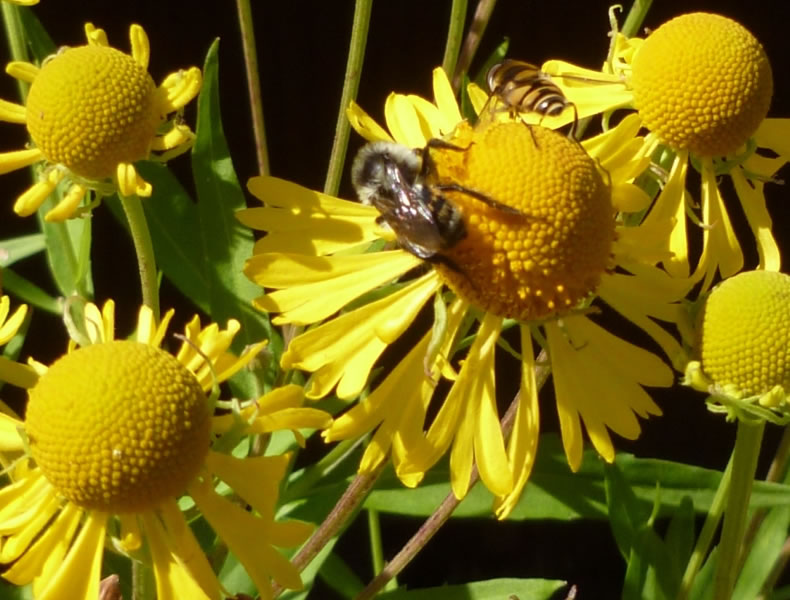
Helen’s Flower Helenium autumnale
This delightful plant loves full sun and tolerates all kinds of soils, doing best if they are damp. The charming flowers bloom en masse late in the season—maybe plant several together in a nice clump. The genus is thought to have been named by Linnaeus (the guy who began giving plants scientific names) for the world’s most beautiful woman, Helen of Troy. Legend has it that the flowers sprung up from the ground where her tears fell.
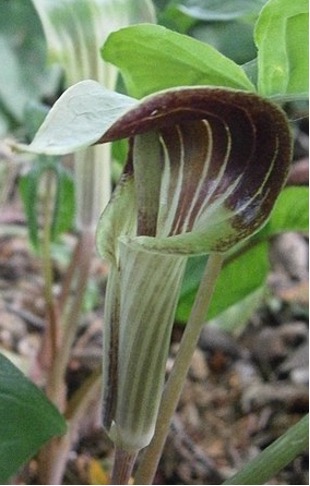
Jack-in-the-Pulpit Arisaema triphyllum
OUT OF STOCK
Who doesn’t love Jack-in-the-Pulpit? It’s one of those rare plants that delights the eye mainly though its clean lines and elegant structure. As for color, green and maroon are colors, plus the berries ripen to a brilliant scarlet. And guess what? It’s easy to grow, so long as you give it what it needs: a bit of shade and moisture.
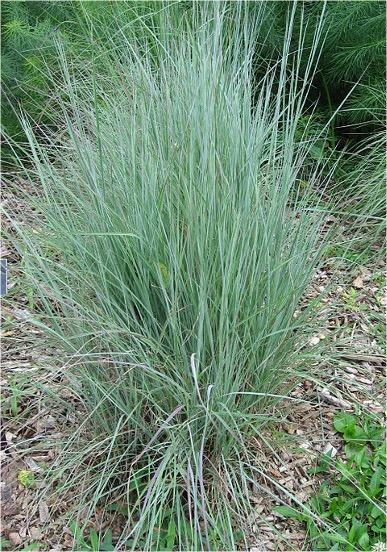
Little Bluestem Schizachyrium scoparium
OUT OF STOCK
One of our most attractive ornamental grasses, it sports attractive blue-green foliage that turns a striking burgundy red in fall, with stems topped by pale, silvery seed heads. Like most native grasses, it appears impervious to insects and deer.

New England Aster Aster novae-angliae
OUT OF STOCK
Tons of gorgeous pink to purple blooms in the fall are a late-season godsend for butterflies and other pollinators. Good luck counting how many species you can find at one time nectaring on this aster. Can get tall and leggy, so if that bugs you, pinch back in early summer or put in the back of the border. Likes sun and partial shade and almost all soils, so long as they aren’t super dry.

Prairie Coneflower Ratibida columnifera
This cheery plant blooms throughout the summer, filling in happily when others are trying to make up their minds to flower. The blossoms, which can vary in color from golden to red, are held aloft on stiff stems and are generally at their best in a mass planting. As you might expect, this sun lover grows well in a variety of conditions, so long as they aren’t too wet.
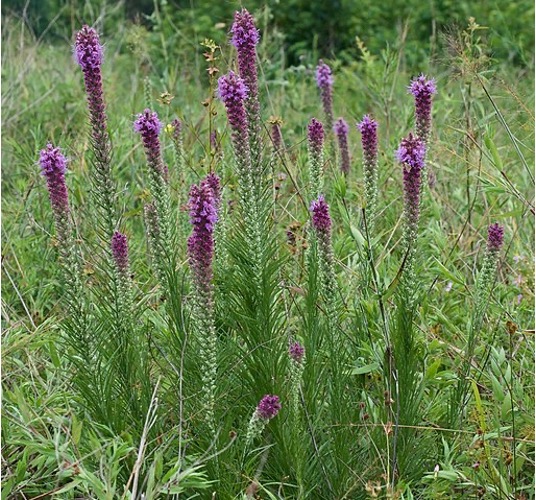
Prairie Blazing Star
Liatris pycnostachnya
Right up there with purple coneflower as one of the showiest native plants for the home garden. It looks great with other natives including Purple Coneflower, Rattlesnake Master, Wild Quinine and prairie grasses in formal or naturalized settings. It loves medium, damp soil, but isn’t as fussy as its gorgeous looks imply. if conditions are a bit drier, it will just be a bit shorter.
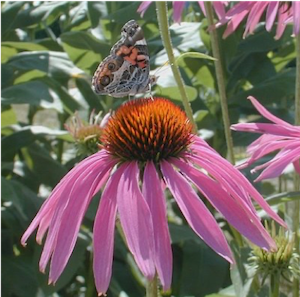
Purple Coneflower Echinacea purpurea
OUT OF STOCK
The gateway plant leading to a lifelong addiction to native gardening. With a handful of other natives (black-eyed Susan comes to mind), purple coneflower can lure even the most conventional gardener to consider transforming a corner of their yard into a wild paradise. It’s gorgeous, familiar, adaptable, and well-behaved. Not to mention easy to grow in average well-drained soil in full sun to partial shade.

Rattlesnake Master Eryngium yuccifolium
A very unusual plant and a perfect choice to replace nonnative globe thistles in your native garden. The opposite of fussy, it grows well in most soils, so long as it has full sun. Fun fact: Rattlesnake master is cousin to the carrot.
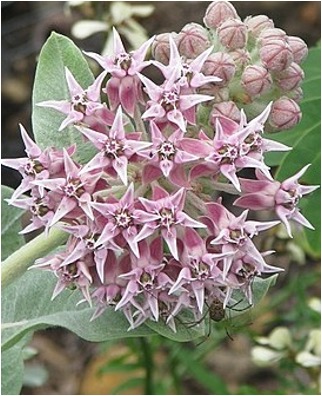
Showy Milkweed Asclepias speciosa
SOLD OUT
Somewhat similar to common milkweed, showy milkweed is not an aggressive spreader, so you can use it in a tended garden. (You might want to pull a few stems out at some point. Oh well.) A clump is stunning when in bloom, and like its cousin, it’s happy in lousy conditions. It will do fine in just about any sunny spot so long as it doesn’t get wet feet.
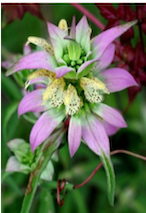
Spotted Bee Balm
Monarda punctata
OUT OF STOCK
Spotted Bee Balm, a pollinator magnet, has been designated as having special value to native bees according to the Pollinator Program of The Xerces Society for Invertebrate Conservation. Preferring drier conditions, Spotted Bee Balm is more drought tolerant than other monardas and readily self-seeds on open, sandy soils. This is a good thing, because you will want lots of this plant.
Spotted Bee Balm, also known as Dotted Horsemint, is aromatic and avoided by deer and rabbits. The plant is attractive when paired with butterfly weed and lead plant.
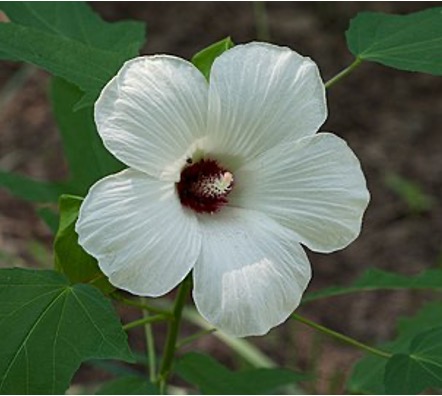
Rose Mallow Hibiscus laevis
These blooms are so fancy you might be tempted to think they aren’t native to the U.S., but indeed they are. While it loves the wet, you can grow rose mallow (aka halberd-leaf rosemallow) in your garden, so long as it has rich, moist soil. This isn’t a plant for dry sand. While it will tolerate some shade, it flowers best in full sun. It attracts butterflies and other pollinators with its showy blossoms.
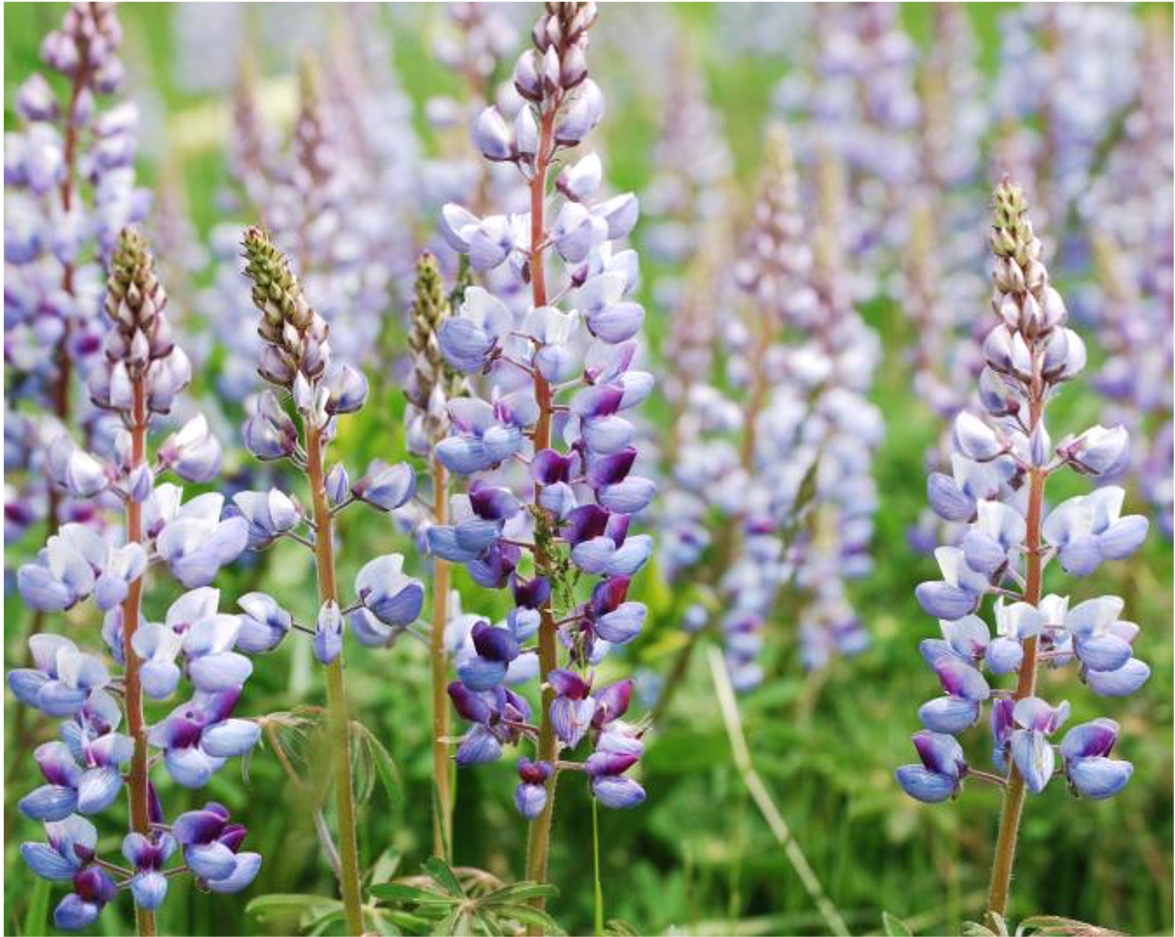
Wild Lupine Lupinus perennis
OUT OF STOCK
Lovely bluish-purple, tapering spires prefer the worst soil you can throw at them: dry sand. Of benefit to hummingbirds and butterflies, it will reseed where it is happy, so put it in its happy place. This is not the common, big-leaf lupine found in local gardens and roadsides, which was introduced from the Pacific Northwest. Unfortunately, the introduced lupine (Lupinus polyphyllus) hybridizes easily with Wild Lupine and can crowd out native plants.
